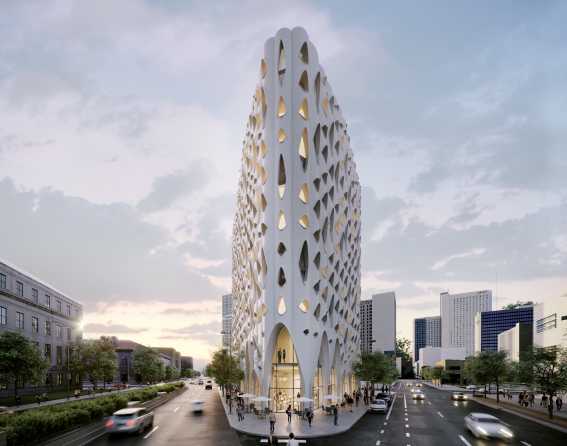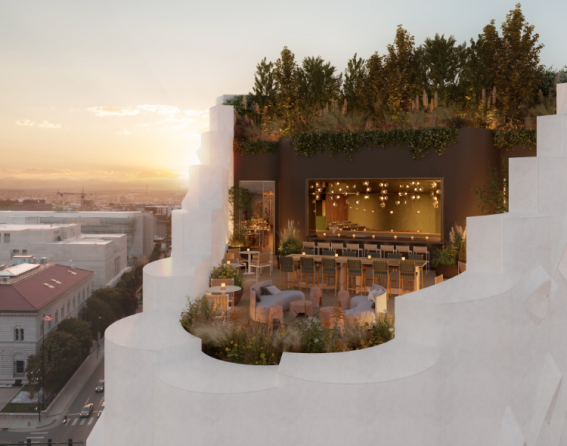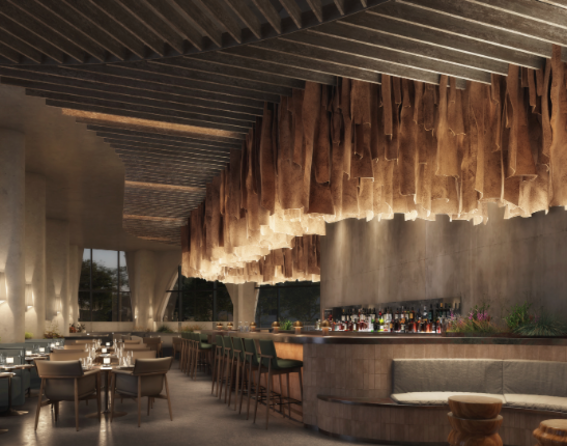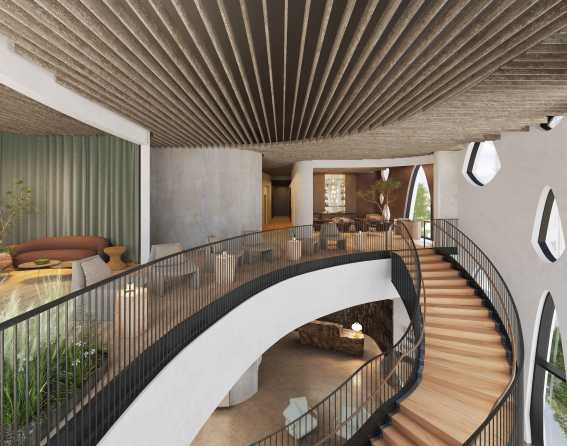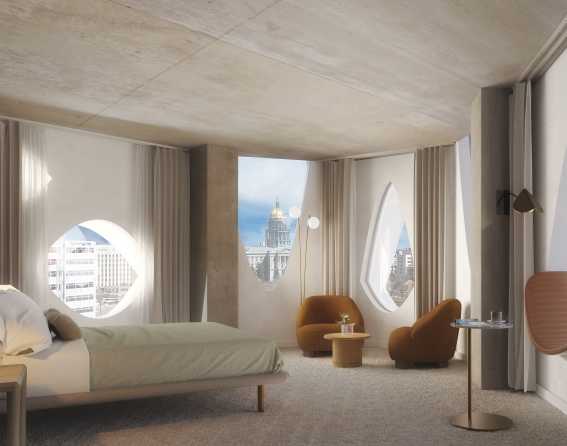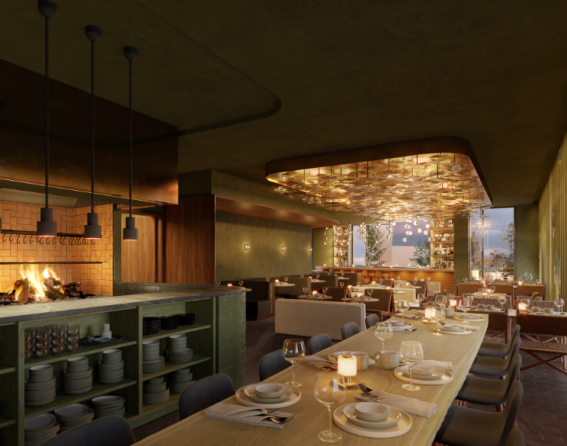An underutilized lot on the southern tip of downtown Denver has sprouted one of the country’s most sustainable hotels. It’s also one of the hardest to miss.
Opened in October 2024, Populus Hotel is modeled after a many-eyed Colorado icon: The architects at Studio Gang drew inspiration from the state’s native aspen tree, Populus tremuloides.
“The hotel’s distinctive aspen-eye windows are inspired by the natural geometry found on aspen bark and not only serve an aesthetic purpose but are integral to the building’s energy efficiency, allowing us to optimize natural light while reducing heat gain,” says Jon Buerge, president of Populus’ developer, Denver-based Urban Villages. “Our goal was to create a design that is both timeless and functional, seamlessly integrating the built environment with the natural world.”
That mindset dovetails into the sustainability-first ethos behind the hotel.
“We created Populus to set a new standard for the hospitality industry—one where sustainability is not a buzzword or afterthought but is a driving force behind the entire concept,” says Buerge. “The idea was to create a hotel that goes beyond simply accommodating guests; it’s about fostering a meaningful connection between travelers, the local community and the environment.”
Reducing the Carbon Footprint
The carbon footprint of the structure itself was reduced via sustainable design and construction techniques and further offset by the acquisition of 7,000 tons of certified carbon credits and the planting of 70,000 trees in Gunnison County. Populus also actively gives back to the environment by planting a tree for every night’s stay through its “One Night, One Tree” program in partnership with the National Forest Foundation. The hotel also uses 100 percent renewable electricity and turns all food waste into compost that gets returned to local farmers.
These efforts intertwine into a superlative for the hotel.
“Populus stands apart as the first carbon-positive hotel in the United States, thanks to our commitment to offset both the building’s embodied and operational carbon footprints,” says Buerge.
He says he uses “carbon-positive” to describe the hotel for a reason: The term reflects “a commitment to sequester more carbon in biomass and soil than the combined embodied and operational footprints of the building across its entire lifecycle—therefore, going beyond net-zero to have a net positive impact on climate change,” he explains. “While the term, ‘carbon-negative,’ is often associated with reducing a building’s net emissions to zero, ‘carbon-positive’ goes further by ensuring that we are actively helping the planet to regenerate and thrive.”
Drawing on Natural Elements, Stunning Views
From the forest floor of the lobby up to the rooftop canopy, the biophilic design applies to the interiors as well. Everything from the dim branching hallways to the leaf-like copper panels on the ceiling of Stellar Jay, the rooftop restaurant, takes cues from aspen trees. Made of innovative “mushroom leather,” the Reishi Tapestry hanging over the lobby and bar resembles something you might find growing in the shared root structure of an aspen colony.
The elevators even feature the sounds of an aspen grove near Rocky Mountain National Park. An artist recorded roughly 1,500 hours and distilled it into 24-hour cycles for each of the four seasons.
With stunning views of the Colorado State Capitol, Civic Center Park and Denver’s City and County Building from the hotel’s signature ocular-inspired windows, the hotel’s 265 rooms and suites feature a monochrome color scheme that matches aspen bark. All feature minibars with Quinn Snacks and other local goodies; some feature hammock-inspired cushioned seating along the windows.
The lobby and mezzanine, with clean-shaven logs for cocktail tables and plenty of Instagrammable nooks and crannies, is prime real estate for people-watching, with plenty of city and mountain panoramas to boot. The Urban WoodWorks of Longmont sliced the unique front desk from a single cottonwood tree, and reclaimed snow fences and beetle-kill pine are utilized in the decor.
“The public areas are designed to be more than just spaces to pass through,” says Buerge. “They are intended to invite reflection and engagement, serving as both an art installation and a statement on innovative sustainable materials.”
Buerge says he hopes the hotel can lead the hospitality industry into a greener future.
“Our aspiration is for Populus to serve as an icon of sustainable hospitality, not just for Denver but as a model for cities globally,” he explains. “Our hope is that Populus inspires other developers to prioritize sustainability, demonstrating that it is both a viable and necessary path forward.”



